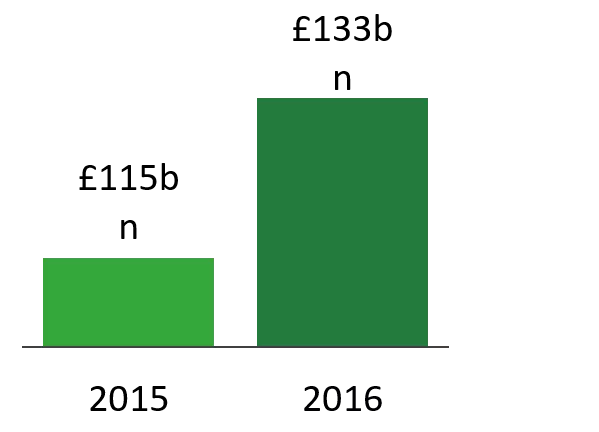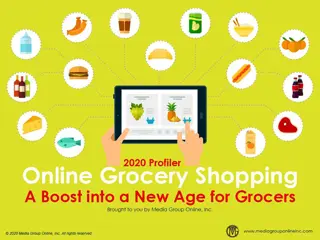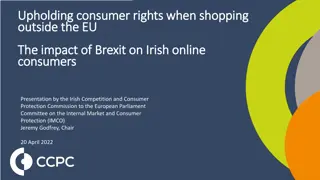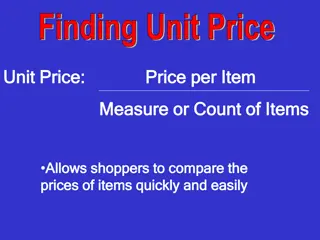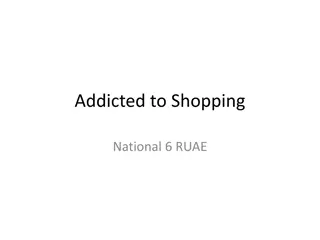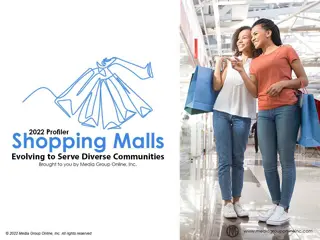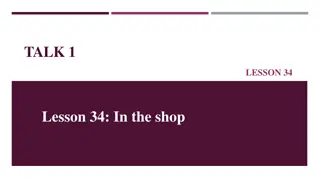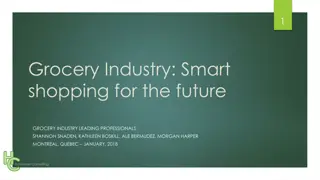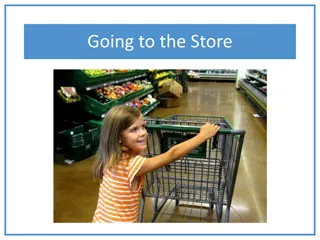Online Grocery Shopping Trends in the UK
E-commerce is a growing sector with significant online retail expenditure in the UK. While the online grocery market is small compared to offline, it is projected to rapidly expand. This study aims to investigate consumption behaviors, representativeness of online grocery samples, price sensitivity of online shoppers, and stability of online grocery baskets.
Download Presentation

Please find below an Image/Link to download the presentation.
The content on the website is provided AS IS for your information and personal use only. It may not be sold, licensed, or shared on other websites without obtaining consent from the author. Download presentation by click this link. If you encounter any issues during the download, it is possible that the publisher has removed the file from their server.
E N D
Presentation Transcript
Online Grocery Shopping: Identifying Change in Consumption Practices Jo Munson Thanassis Tiropanis Michelle Lowe
E-commerce is big business, not least in the UK UK online retail expenditure +16% 133b n 115b n 2015 2016 Introduction
UK online grocery market is relatively small Online, 11bn 2015 Offline, 142bn Introduction
but projected to grow rapidly Online, 11bn 2015 Offline, 142bn Online, 18bn 2020 Offline, 213bn Introduction
Insight into online grocery consumer behaviour invaluable for retailers Customer retention Personalisation Complementary service provision Increasing LTV in low margin industry Multi-channel planning Introduction
and good for governments, academia and consumers too Town planning and policy design for governments Better quality services for consumers Socio-technical understanding of consumer behaviour in academia Introduction
The problem Lack of good quality data Most research conducted is: Synthetic lab-based Survey / intention based Introduction
The opportunity and another problem Access to WM Morrisons Plc (Morrisons) Google Analytics account But No comparable offline dataset available through Morrisons Most comprehensive publicly available data covering online and offline grocery shopping in UK: ONS LCF survey Introduction
Aims of this study Are there differences in consumption behaviours in online and offline grocery shopping in the UK? Is the Morrisons sample representative of online grocery shopping at the national level? Are online grocery shoppers price sensitive? Are online grocery baskets stable? Aims of this study
Methodology & results Are there differences in consumption behaviours in online and offline grocery shopping in the UK? Is the Morrisons sample representative of online grocery shopping at the national level?
Dataset descriptions Morrisons sample 986,973 transacted food and drink items from 41,201 users/households National level population Living Costs and Food (LCF) survey of 4,760 households, mapped back to general population Methodology
Variables used to compare Morrisons sample with national statistics Variable Bread & cereals, Fruit & veg., Meat, Fish, Dairy & eggs, Confectionary, Non-alcoholic Drinks, Other Food category Fresh, Not Fresh Food freshness NE, NW, E/W Midlands, SE, SW, East of England, Yorkshire, London, Wales, Scotland Region Methodology
Comparing online and offline baskets Null hypothesis 1 At the national level, the distribution of revenue between food categories for online and offline transactions is the same Result of 2 test Strong evidence to reject null hypothesis Confectionary & Meat overweight in offline sample Other & non-alcoholic drinks overweight in online sample Methodology
Comparing Morrisons sample with population Null hypothesis 2 The distribution of revenue between food categories for the online LCF 2016 and online Morrisons sample transactions is the same Result of 2 test Some evidence to reject null hypothesis Bread and cereals overweight in Morrisons sample Methodology
How does the Morrisons sample compare to the UK population distribution? Sample distribution relative to population < -4.75% -4.76 +1.5% +1.51 +7.75% > +7.75% Methodology
Comparing re-weighted Morrisons sample with population Null hypothesis 3 The distribution of revenue between food categories for the online LCF 2016 and re-weighted online Morrisons sample transactions is the same Result of 2 test Insufficient evidence to reject null hypothesis Re-weighted sample not significantly different from population Methodology
Comparing proportion of fresh and non- fresh products in online and offline baskets Null hypothesis 4 The distribution of revenue between fresh and non-fresh for the offline LCF 2016 and re-weighted online Morrisons sample transactions is the same Result of 2 test Sufficient evidence to reject null hypothesis Proportion of fresh products is larger in Morrisons sample Methodology
Methodology & results Are online grocery shoppers price sensitive? Are online grocery baskets stable?
Last page visited before adding products to basket Price sensitive Offers Flash sales Sort by price ascending Stable Shopping list Favourites Suggested order Previous order Methodology
Average basket value 33.56 20.93 Morrisons LCF (Offline) Results
Morrisons specific behaviour: Price sensitivity Price sensitive 23% Price insensitive 77% Offers 22% Search (price asc.) 1% Results
Morrisons specific behaviour: Basket Stability Favourites 36.3% Disrupted product adds 61.0% Stable 39% Shopping list 0.4% Other 1.6% Results
Conclusions, implications & future work
Conclusions Differences in basket consumption between online and offline grocery shopping in the UK Re-weighting Morrisons offers potential to represent national-level behaviour Conclusions
Conclusions Some evidence that online consumers spend more on fresh products than offline, contrary to popular belief Some evidence consumers are not as price-sensitive as retailers / current research suggests Conclusions
Future work Examine behaviour by location, device, time How the capacity to edit baskets affects basket composition Qualitative investigation Towards a Theory of online grocery shopping behaviour Future work
Online Grocery Shopping: Identifying Change in Consumption Practices Jo Munson j.munson@soton.ac.uk Thanassis Tiropanis Michelle Lowe https://link.springer.com/chapter/10.1007/978-3-319-70284-1_16
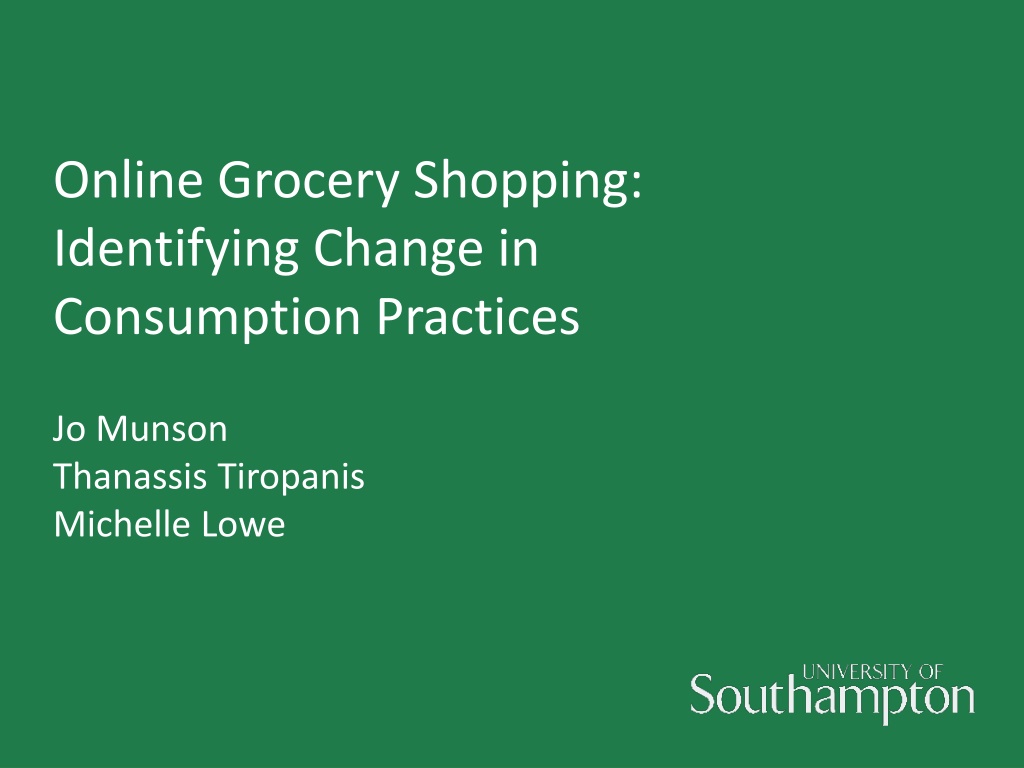
 undefined
undefined




